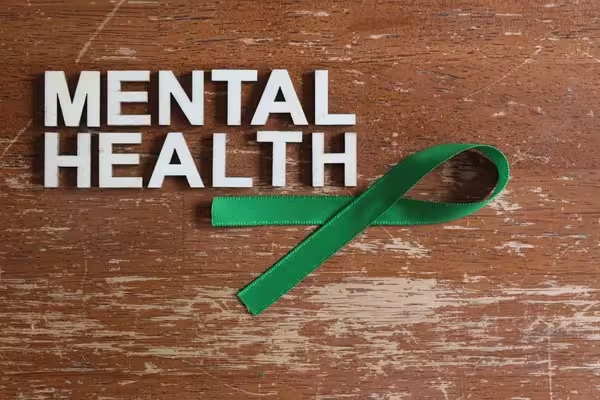Colors and Mental Health
Color has a significant impact on our mood and emotions. Different colors can evoke various feelings and have symbolic meanings. Understanding the relationship between colors and mental health can help create environments that promote well-being and support individuals in their mental health journeys.
Impact of Colors on Mood
Studies have shown that colors can have a profound effect on our emotions and overall mood. For example, blue and green are known to create a calming atmosphere, while orange and yellow can stimulate appetite. Red and pink, on the other hand, can inspire passion and energy. Furthermore, purple has been found to boost creativity and productivity [1].
It’s important to note that individual reactions to colors can vary. Some people may find certain colors soothing and comforting, while others may have different associations or preferences. The impact of colors on mood is subjective and can depend on personal experiences, cultural backgrounds, and individual sensitivities.
Symbolism of Different Colors
Colors hold symbolic meanings that can influence our perception and understanding of the world. Here are a few examples of colors and their symbolic significance:
- Green: Green symbolizes growth, harmony, and renewal. It is often associated with nature and has a calming effect on the mind. Green environments, such as parks or gardens, can reduce anxiety and promote tranquillity. In the context of mental health awareness, the green ribbon is a recognized symbol that represents support for individuals and communities affected by mental health challenges.
- Yellow: Yellow is a bright and cheerful color that can stimulate joy, energy, and optimism. It is often associated with happiness and can uplift spirits. However, intense shades of yellow might be overwhelming and cause discomfort for some individuals. It’s essential to consider individual preferences and sensitivities when incorporating yellow in mental health awareness campaigns or environments [2].
- Red: Red is a powerful color that represents energy, passion, and action. It can evoke strong emotions and stimulate attention. However, vivid shades of red may also increase feelings of stress or anger in some individuals. In the context of mental health awareness, the red ribbon is a symbol of support for those affected by HIV/AIDS.
- Purple: Purple has long been associated with creativity, luxury, and spiritual insight. It can inspire introspection and calmness. However, darker shades of purple might evoke feelings of melancholy. When incorporating purple in mental health awareness initiatives, it’s important to consider the overall message and context to ensure a supportive and uplifting environment.
Understanding the impact and symbolism of colors can aid in creating supportive environments for mental health awareness. By incorporating appropriate colors in campaigns, materials, and physical spaces, we can contribute to a more inclusive and empathetic society that promotes mental well-being.
Green Ribbon and Mental Health Awareness
The green ribbon is internationally associated with mental health awareness, specifically signifying depression awareness. By wearing or displaying the green ribbon, individuals show their support and encourage open conversations about depression, aiming to reduce the stigma surrounding it. The color green serves as a visual reminder to prioritize mental health and fosters a more understanding and supportive society [4].
Significance of the Green Ribbon
The green ribbon holds profound significance in the realm of mental health awareness. It symbolizes a commitment to understanding, supporting, and advocating for individuals facing mental illness. The color green, associated with nature, represents new life, renewal, growth, recovery, healing, and personal growth in the context of mental health. By wearing or displaying the green ribbon, individuals demonstrate their solidarity with those affected by mental health issues and their dedication to fostering a compassionate and inclusive environment.
Depression Awareness Symbolism
Depression is a common mental health condition that can greatly impact an individual’s well-being. The green ribbon specifically signifies depression awareness and encourages open conversations about this condition. By wearing or displaying the green ribbon, individuals contribute to reducing the stigma surrounding depression and create a safe space for discussions about mental health.
The symbolism of the green ribbon extends beyond raising awareness. It represents a call to action, urging society to prioritize mental health, support those experiencing depression, and promote mental well-being. The visual reminder of the green ribbon serves as a catalyst for empathy, understanding, and compassion. It reminds us that mental health is a vital aspect of overall well-being and that seeking help and support should be encouraged and embraced.
By embracing the green ribbon and its symbolism, we can collectively work towards building a society that values mental health, supports those affected by mental illness, and fosters a culture of empathy and understanding. Together, we can make a difference in raising awareness about depression and promoting mental health for all.
Get your question answered now.
Mental Health Awareness Campaigns
In the effort to promote mental health awareness and address the challenges faced by individuals with mental health conditions, various campaigns have been established. Two notable campaigns are National Minority Mental Health Month and Mental Health Month in May.
National Minority Mental Health Month
Observed each July in the United States, National Minority Mental Health Month aims to raise awareness about the challenges affecting the mental health of racial and ethnic minority groups. The campaign seeks to address disparities and improve mental health outcomes among these communities. By highlighting the unique experiences and needs of minority populations, National Minority Mental Health Month strives to promote understanding, reduce stigma, and encourage access to culturally competent mental health care.
Mental Health Month in May
Mental Health Month, observed in May, is a campaign focused on raising awareness and reducing the stigma surrounding mental health. The month-long initiative aims to promote mental health education, advocacy, and support to create a supportive environment that fosters mental well-being for all individuals. By encouraging open conversations about mental health and providing resources, Mental Health Month seeks to empower individuals to seek help, support one another, and cultivate a society that prioritizes mental well-being.
These campaigns play a vital role in promoting mental health awareness, educating the public, and advocating for the well-being of individuals with mental health conditions. By shedding light on the importance of mental health and addressing the unique needs of diverse populations, these initiatives contribute to a more inclusive and supportive society.
To further explore the significance of mental health awareness and the impact it can have on individuals and communities, consider reading our articles on why mental health awareness is important and mental health awareness quotes. Additionally, you can learn more about the symbolic representation of mental health awareness through the mental health awareness ribbon.
Other Awareness Colors
In addition to the green ribbon, which is widely recognized as the symbol for mental health awareness, there are several other colors that represent different causes and promote awareness. Let’s explore two of these colors and their associated causes.
Red Ribbon for AIDS Awareness
The red ribbon is a powerful symbol for AIDS awareness, representing the ongoing battle against HIV/AIDS. It serves as a reminder of the importance of HIV prevention, treatment, and support for individuals affected by the disease [7]. By wearing the red ribbon, individuals show their solidarity with those impacted by HIV/AIDS and help reduce the stigma surrounding the disease.
AIDS awareness campaigns aim to foster conversations, educate others about prevention and treatment, and promote inclusivity and support for those affected. The red ribbon serves as a visual reminder of these efforts, inspiring advocacy and raising awareness on a global scale.
Gray Ribbon for Allergies
The color gray is associated with allergies and serves as an awareness color for this condition. The gray ribbon represents the need for understanding, support, and research in the field of allergies. It symbolizes the challenges faced by individuals with allergies and encourages inclusivity and support for those affected.
By promoting awareness of allergies, the gray ribbon helps to educate the public about the impact of allergies on individuals’ lives. It serves as a reminder to be mindful of the challenges faced by those with allergies and encourages support and empathy.
Understanding the significance of different awareness colors helps to foster a sense of unity and support for various causes. Whether it’s wearing a red ribbon for AIDS awareness or a gray ribbon for allergies, these symbols provide a visual representation of the ongoing efforts to raise awareness, promote understanding, and support those affected by different health conditions.
For more information on mental health awareness and other related topics, feel free to explore our articles on why mental health awareness is important, mental health awareness quotes, and mental health in the workplace.
Green Ribbon Initiatives
The green ribbon has become a globally recognized emblem of mental health awareness, symbolizing a commitment to understanding, supporting, and advocating for individuals facing mental illness. It represents hope, renewal, growth, recovery, healing, and personal growth in the context of mental health. The green ribbon is internationally associated with mental health awareness, specifically signifying depression awareness.
Global Recognition of the Green Ribbon
The green ribbon has gained international recognition as the symbol of mental health awareness. It is used to show support for mental health and to raise awareness. Wearing the green ribbon demonstrates care for colleagues, loved ones, or anyone encountered in daily life, signaling a commitment to fostering an understanding and supportive environment for individuals facing mental health challenges.
The green ribbon campaign, which launched in the 1990s, aimed to encourage open conversations about mental health and break down barriers that prevented people from seeking help and support. Over time, the green ribbon has gained global recognition, serving as a beacon of hope, support, and understanding for those affected by mental health issues.
Advocacy and Support for Mental Health
The green ribbon has been embraced by various organizations, advocates, and public figures as a powerful symbol for mental health awareness. Their involvement has played a significant role in raising the visibility of the green ribbon and breaking down the stigma surrounding mental health issues. Through their support and advocacy, these individuals and organizations have helped to promote open conversations about mental health on a global scale.
The Mental Health Foundation in the UK has been instrumental in popularizing the green ribbon as a symbol of mental health awareness since 2001. The green ribbon has become an integral part of Mental Health Awareness Week, which encourages individuals, organizations, and communities to wear the ribbon as a sign of solidarity and support for mental health awareness.
The green ribbon initiatives and advocacy efforts have helped to create a global movement focused on understanding, supporting, and destigmatizing mental health. By wearing the green ribbon and participating in mental health awareness campaigns, we can all contribute to fostering a more compassionate and inclusive society that prioritizes mental well-being.
To learn more about mental health awareness, check out our articles on why mental health awareness is important and mental health awareness quotes.
Mental Health Awareness Week
Mental Health Awareness Week, organized by the Mental Health Foundation, has been a significant event since 2001, bringing together millions of people from various sectors in the UK to focus on good mental health. This annual event takes place every May, with the next one scheduled for 12 to 18 May 2025. The theme for each year’s Mental Health Awareness Week is announced closer to the week itself.
Mental Health Foundation Initiatives
The Mental Health Foundation, as the driving force behind Mental Health Awareness Week, organizes and leads various initiatives during this important week. Their efforts aim to raise awareness, promote understanding, and encourage conversations about mental health.
One of the key initiatives of the Mental Health Foundation is to engage individuals and communities in dialogue surrounding mental health. They provide resources, campaigns, and events that facilitate open conversations about mental health, reducing stigma and encouraging support. By fostering a sense of community and understanding, the Mental Health Foundation strives to create a more compassionate and inclusive society.
Themes and Campaigns
Each year, Mental Health Awareness Week focuses on a specific theme that highlights an important aspect of mental health. The theme for Mental Health Awareness Week 2024 was ‘Movement: Moving more for our mental health’. This campaign emphasized the benefits of physical activity for mental health and aimed to encourage individuals to incorporate regular movement into their daily routines [10].
The campaign highlighted the positive impact of physical activity on mental well-being, including improved mood, reduced stress and anger, enhanced sleep quality, and a positive body image. It emphasized that the goal was to support good mental health and emotional calm, rather than promoting excessive exercise or triggering individuals with eating disorders or exercise addiction. The Mental Health Foundation encouraged individuals to find suitable moments for movement that align with their own capabilities and interests. They also provided resources for those concerned about excessive exercise.
The specific theme for Mental Health Awareness Week is anticipated to be announced closer to the week itself. It will continue to focus on promoting mental health awareness, fostering understanding, and encouraging actions that support positive mental well-being.
Mental Health Awareness Week, with its initiatives and campaigns, serves as a vital platform for raising awareness, driving conversations, and promoting positive mental health practices. By engaging individuals, communities, and organizations, this week-long event aims to contribute to a society that prioritizes and supports mental well-being.
Resources
- [1]: https://www.akzonobel.com/en/about-us/stories-/how-color-benefits-mental-health
- [2]: https://fundraisingforacause.com/blogs/news/understanding-mental-health-colors
- [3]: https://fundraisingforacause.com/blogs/news/
- [4]: https://www.leorabh.com/blog/mental-health-awareness-color
- [5]: https://www.cdc.gov/healthequity/features/minority-mental-health/index.html
- [6]: https://www.mainspringrecovery.com/blog/mental-health-awareness-color
- [7]: https://bagwellpromotions.com/awareness-color-definition-guide/
- [8]: https://www.mentalhealth.org.uk/our-work/public-engagement/green-
Did You Know? According to WHO, one out of every seven teens is struggling with some sort of mental illness.










